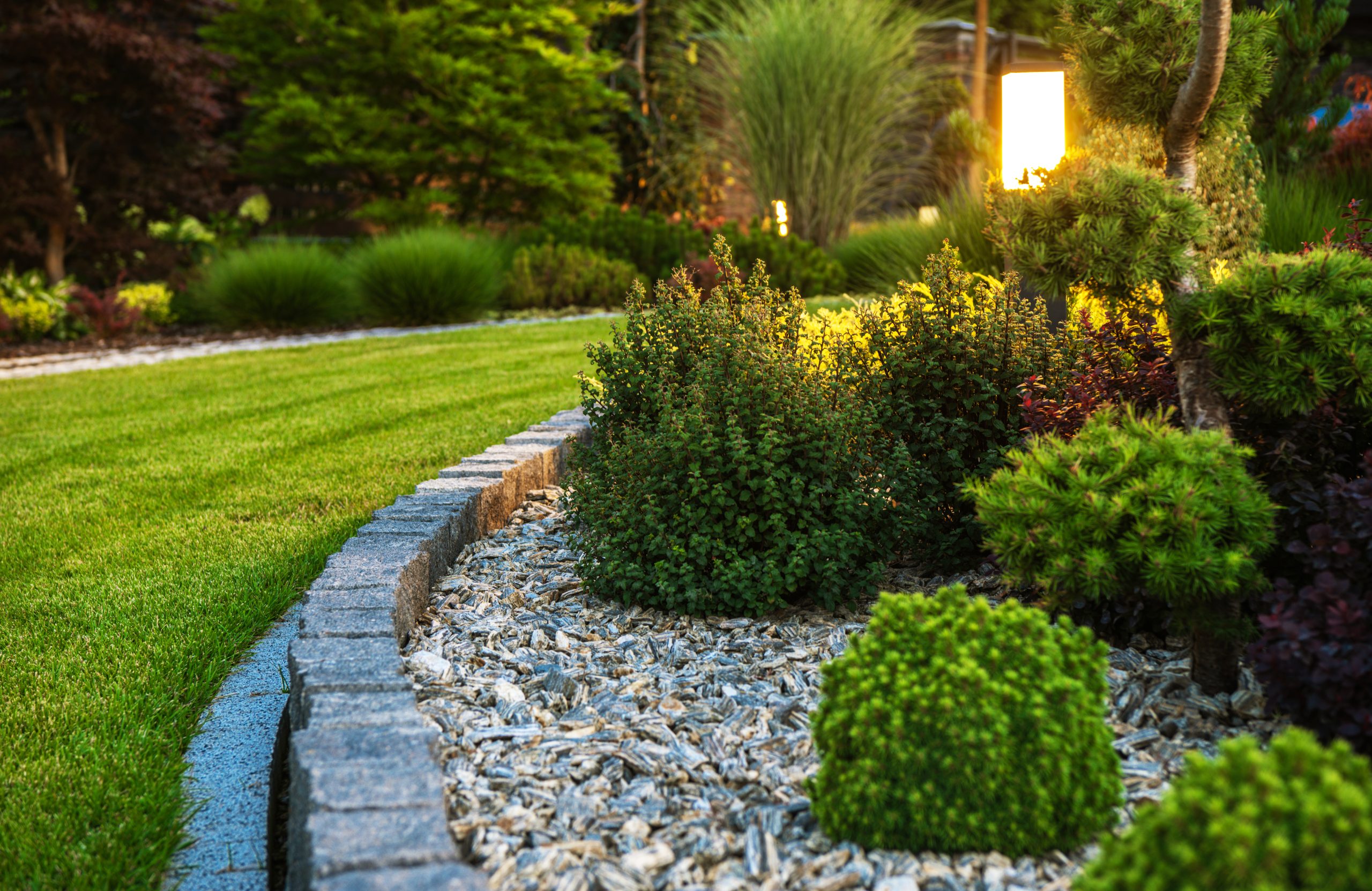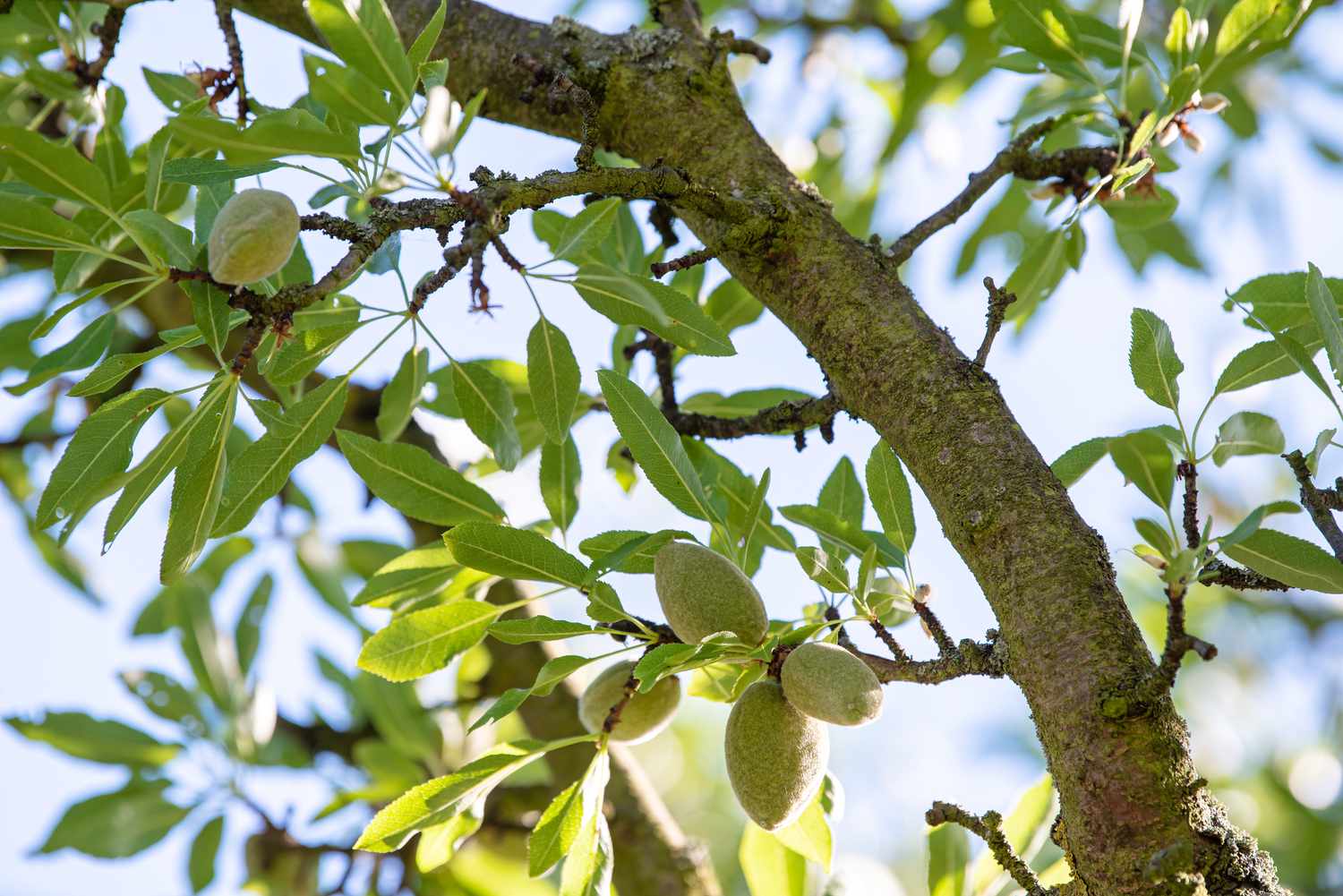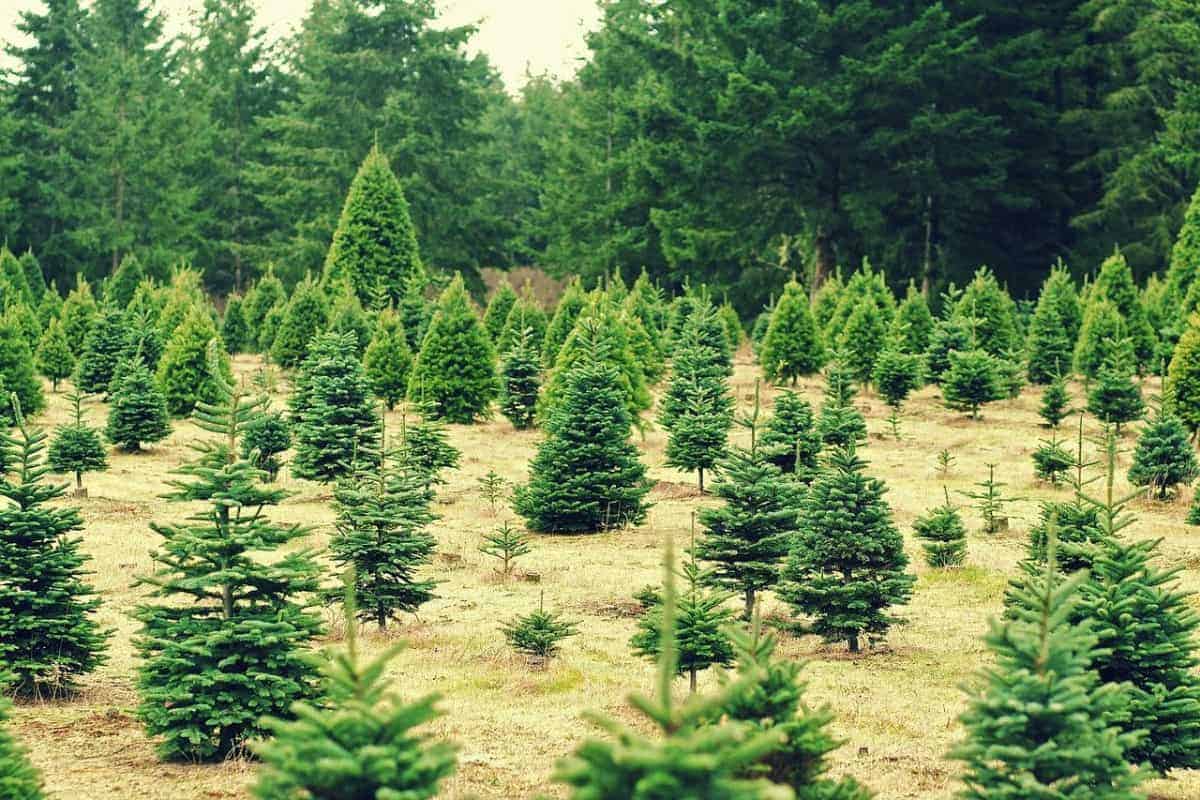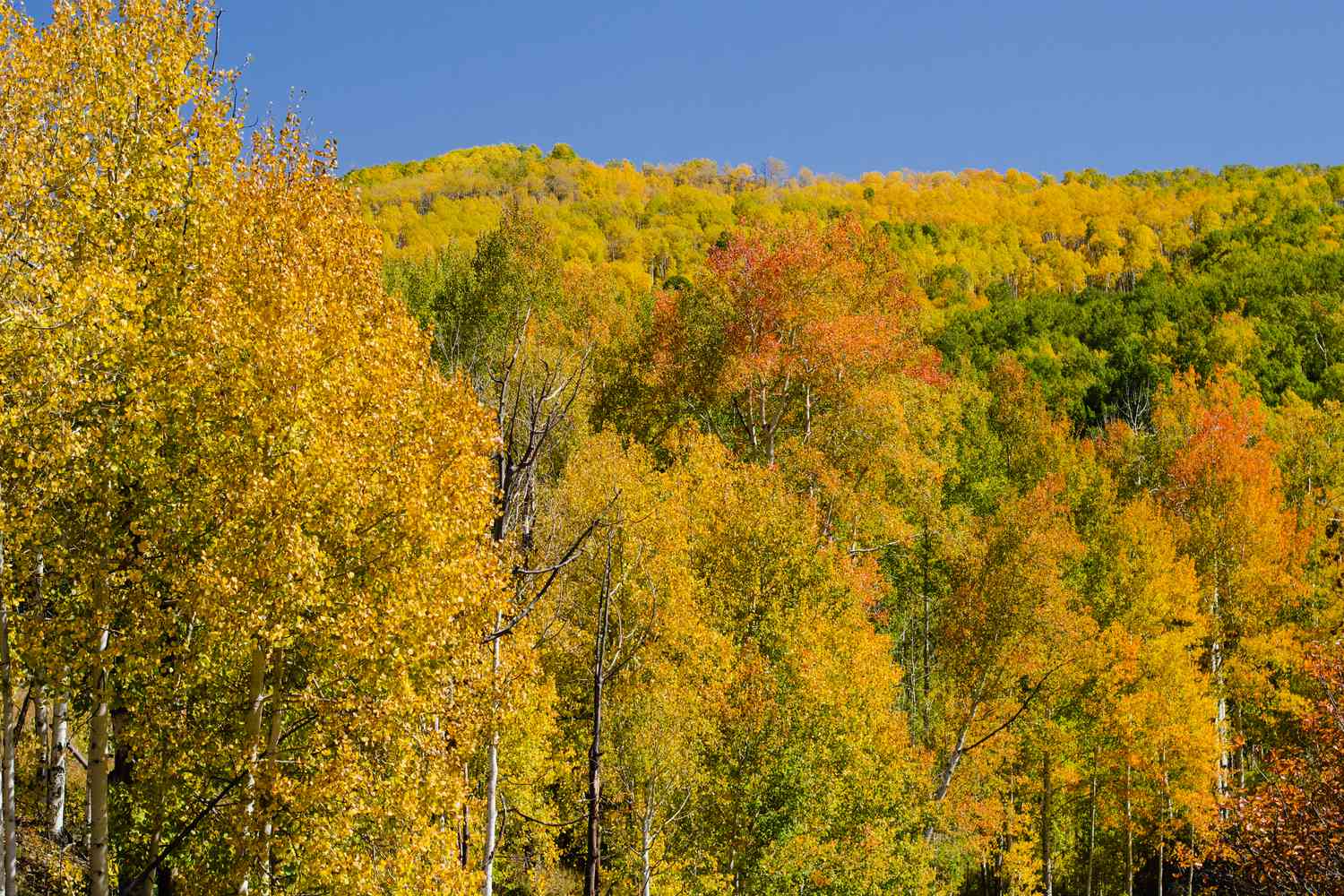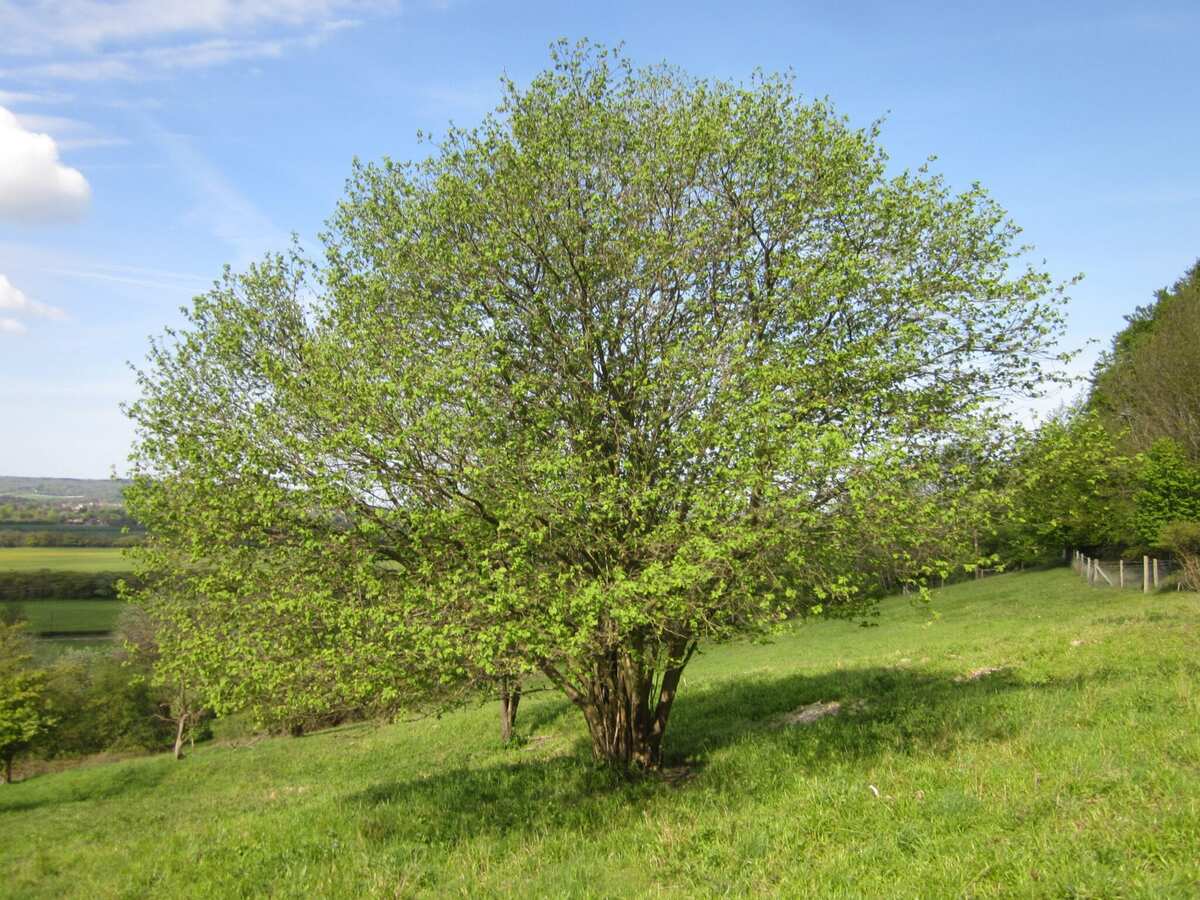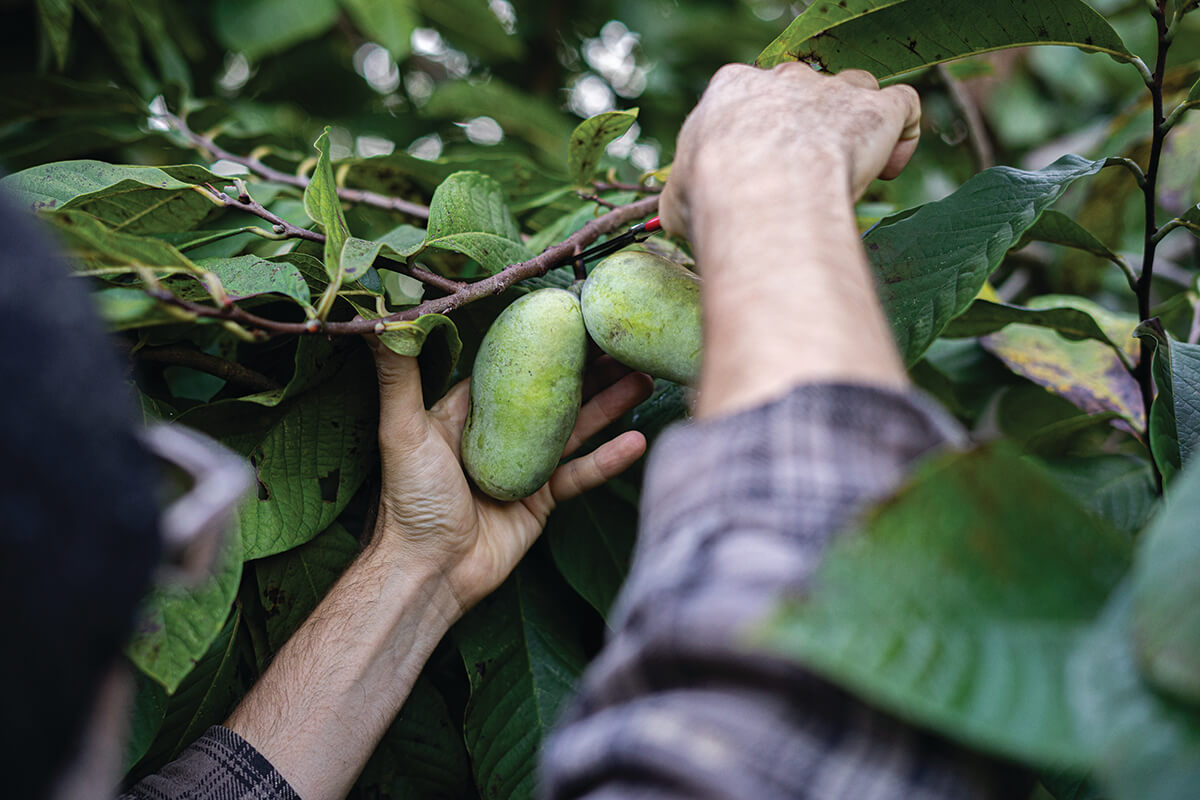Home>Types of Gardening>Edible Gardening>What Trees Do Truffles Grow Under


Edible Gardening
What Trees Do Truffles Grow Under
Modified: January 22, 2024
Discover the secrets of edible gardening and learn about the fascinating relationship between trees and truffles. Find out what trees truffles grow under and start your own truffle-growing adventure.
(Many of the links in this article redirect to a specific reviewed product. Your purchase of these products through affiliate links helps to generate commission for Chicagolandgardening.com, at no extra cost. Learn more)
Table of Contents
Introduction
Welcome to the fascinating world of truffles and their symbiotic relationship with trees. Truffles, often dubbed as the “black diamonds” of the culinary world, are highly prized for their unique and intense flavors. These delectable fungi are known for their ability to grow and develop in certain conditions, thanks to their close association with various tree species.
Truffles are not your typical garden variety mushroom. They are prized for their pungent aroma and distinct flavors, which can vary depending on the species and the trees they grow under. The symbiotic relationship between truffles and trees is a delicate and intricate dance that has been evolving for thousands of years.
Truffles are not cultivated in the same way as traditional crops. Instead, they rely on specific environmental conditions, specific trees, and a complex network of interactions with other organisms in the soil. Understanding these nuances is crucial for successfully cultivating and harvesting truffles.
In this article, we will explore the factors that influence truffle growth and development, the common tree species that host truffles, and tips for finding truffles under trees. Whether you are a seasoned truffle hunter, a budding gardener, or simply curious about this fascinating delicacy, this article will provide you with valuable insights into the world of truffle cultivation.
Truffles and their Symbiotic Relationship with Trees
Truffles have a unique symbiotic relationship with certain tree species, known as mycorrhizal associations. The truffle fungus forms a mutualistic relationship with the roots of these trees, benefiting both parties involved.
Truffles rely on trees for their survival and growth. The tree provides the truffle fungus with carbohydrates through photosynthesis, while the truffle fungus enhances the tree’s ability to absorb nutrients from the soil. This mutually beneficial relationship allows both the truffles and the trees to thrive.
The relationship starts when truffle spores, dispersed by wind or animals, land near the root system of a compatible tree species. The spores then germinate and infect the tree’s roots, forming a mycorrhizal network. This network consists of tiny filaments, called mycelium, which extend from the truffle and intertwine with the tree’s roots.
Through this mycorrhizal network, the truffle and the tree exchange nutrients and other compounds. The truffle fungus obtains sugars and carbohydrates from the tree, while the tree gains increased access to water and nutrients from the soil, thanks to the expanded surface area provided by the mycelium.
This intimate relationship between truffles and trees is essential for truffle development. Without the presence of compatible tree roots, truffles cannot grow and produce the aromatic compounds that give them their unique flavors.
It is important to note that different truffle species have specific tree preferences. For example, the highly sought-after Black Truffle (Tuber melanosporum) thrives in association with oak, hazel, and certain types of conifer trees. On the other hand, the Bianchetto Truffle (Tuber borchii) prefers the roots of oak, beech, and poplar trees.
Understanding the specific tree requirements of different truffle species is crucial for successful truffle cultivation. By mimicking the natural mycorrhizal associations, it is possible to create optimal growing conditions for truffles and enjoy the delights of these culinary treasures.
Factors that Influence Truffle Growth and Development
Truffle growth and development are influenced by a variety of factors, including environmental conditions, soil composition, and the presence of suitable host trees. Understanding these factors is crucial for successfully cultivating and harvesting truffles.
Soil Composition: Truffles thrive in well-drained soils that are rich in organic matter. The soil should have the right balance of nutrients, including nitrogen, phosphorus, and potassium. The pH level of the soil is also important, with a slightly acidic to neutral pH range (around 6-7) being ideal for truffle growth.
Climate and Temperature: Truffles have specific climate requirements for optimal growth. They prefer regions with mild winters and warm summers, where the soil temperature ranges between 50-60°F (10-15.5°C) during the growing season. Extreme heat or cold can hinder truffle formation and development.
Moisture: Truffles require adequate moisture for growth, but excessive waterlogging can be detrimental. Proper irrigation and drainage systems are essential to maintain optimal soil moisture levels, ensuring the perfect balance for truffle development.
Host Tree Species: Different truffle species have specific host tree preferences. For example, the Burgundy Truffle (Tuber aestivum) often associates with oak, hazel, and pine trees, while the Summer Truffle (Tuber aestivum) thrives in association with hazel and oak trees. It is important to choose the right host trees when establishing truffle orchards or searching for truffles in the wild.
Mycorrhizal Inoculation: Inoculating the roots of young trees with truffle mycelium is a common practice in truffle cultivation. This process involves introducing truffle spores or mycelium to the tree’s root system, promoting the establishment of mycorrhizal associations and increasing the likelihood of truffle formation. Mycorrhizal inoculation can significantly improve truffle yields in orchards.
Competition: Truffles are sensitive to competition from other plants and fungi. It is crucial to maintain the understory of truffle orchards or natural truffle habitats by controlling weed growth and minimizing the presence of other mycorrhizal fungi that are not beneficial for truffles.
Time: Patience is key when it comes to truffle cultivation. Truffle development is a slow process, and it can take several years for truffle-producing trees to become fully established and start producing viable truffles. It is important to provide consistent care and maintenance during this waiting period.
By considering these various factors and implementing proper techniques, it is possible to create optimal conditions for truffle growth and enhance the likelihood of a successful truffle harvest.
Common Tree Species that Host Truffles
Truffles are known to form symbiotic relationships with a variety of tree species. The specific tree species that host truffles can vary depending on the truffle species and the geographic region. Here are some of the common tree species associated with truffle growth:
- Oak Trees: Oak trees, particularly the Quercus ilex and Quercus robur species, are a preferred host for several truffle species, including the highly prized Black Truffle (Tuber melanosporum) and the Burgundy Truffle (Tuber aestivum).
- Hazel Trees: Hazels, such as Corylus avellana, are another common host for truffles. The Hazel Truffle (Tuber mesentericum) and the Burgundy Truffle (Tuber aestivum) are often found in association with hazel trees.
- Pine Trees: Various species of pine trees, including Pinus pinea and Pinus uncinata, play host to truffles such as the Burgundy Truffle (Tuber aestivum), the White Truffle (Tuber magnatum), and the Summer Truffle (Tuber aestivum).
- Poppies: Poplar trees, such as Populus nigra and Populus tremula, are known to support the growth of truffles like the Bianchetto Truffle (Tuber borchii) and the Burgundy Truffle (Tuber aestivum).
- Beech Trees: The European Beech (Fagus sylvatica) is a host tree for several truffle species, including the Burgundy Truffle (Tuber aestivum) and the Summer Truffle (Tuber aestivum).
It is important to note that the presence of these host trees does not guarantee truffle growth. Other factors, such as soil composition, microclimate, and mycorrhizal associations, also play vital roles in the successful cultivation and natural occurrence of truffles.
When establishing truffle orchards or searching for truffles in the wild, it is crucial to research and select tree species that are well-suited for the specific truffle species desired. This will increase the chances of fostering a successful symbiotic relationship and ultimately harvesting abundant truffles.
Cultivating Truffles under Different Tree Species
Truffle cultivation involves carefully selecting and cultivating specific tree species that are known to form symbiotic relationships with truffles. Here are some key considerations for cultivating truffles under different tree species:
- Oak Trees: Oak trees, such as Quercus ilex and Quercus robur, are commonly used in truffle cultivation. To establish a truffle orchard, young oak trees can be inoculated with truffle mycelium or planted in pre-inoculated soil. It is important to choose oak tree varieties that are known to support truffle growth in your specific region.
- Hazel Trees: Hazel trees, such as Corylus avellana, are highly suitable for truffle cultivation. Truffle mycelium can be introduced to the roots of young hazel trees, either through natural inoculation or commercially available inoculated seedlings. Hazel trees should be planted in well-drained soil with the proper pH levels for optimal truffle development.
- Pine Trees: Pine trees, including Pinus pinea and Pinus uncinata, are often used in truffle cultivation, particularly for the Burgundy Truffle (Tuber aestivum) and the Summer Truffle (Tuber aestivum). The roots of young pine seedlings can be inoculated with truffle mycelium during the planting process. It is important to select pine tree varieties that are adapted to your local climate and soil conditions.
- Poplar Trees: Some truffle species, such as the Bianchetto Truffle (Tuber borchii) and the Burgundy Truffle (Tuber aestivum), can be cultivated under certain poplar tree varieties. Poplar trees should be planted in well-drained soil and inoculated with truffle mycelium before or during planting.
- Beech Trees: European Beech (Fagus sylvatica) is a suitable tree species for truffle cultivation, particularly for the Burgundy Truffle (Tuber aestivum) and the Summer Truffle (Tuber aestivum). Similar to other tree species, young beech trees can be inoculated with truffle mycelium during the planting process.
When cultivating truffles under different tree species, it is essential to provide proper care and maintenance. This includes regular irrigation to ensure adequate soil moisture, controlling weed growth, and monitoring the overall health of the trees and truffle orchard.
Successful truffle cultivation requires patience, as it can take several years for truffles to form and develop. It is important to consult with experts, conduct soil tests, and follow appropriate cultivation practices specific to your chosen tree species and truffle variety.
Tips for Finding Truffles Under Trees
Finding truffles in their natural habitat can be an exciting and rewarding experience. While truffle hunting is often associated with trained dogs and pigs, there are a few tips you can follow to increase your chances of finding truffles under trees:
- Research and Educate Yourself: Learn about the truffle species that grow in your region and the tree species they associate with. Understand the optimal growing conditions and the specific habitats where truffles thrive. This knowledge will guide you in selecting the right areas to search for truffles.
- Observe and Identify Suitable Trees: Look for trees that are known to host truffles, such as oak, hazel, pine, poplar, or beech trees. Assess the health and maturity of the trees, as truffles tend to grow better under old, well-established trees.
- Scout the Terrain: Truffles typically grow in specific types of terrain, such as well-drained soils, slopes, or areas with calcareous or limestone formations. Look for signs of appropriate soil conditions and vegetation that indicate suitable truffle habitats.
- Timing and Seasonality: Truffles have specific growth seasons depending on the species. Research the right time of year to search for truffles and plan your outings accordingly. For example, Black Truffles (Tuber melanosporum) are typically harvested during the winter months, while Summer Truffles (Tuber aestivum) can be found during the summer season.
- Use Your Senses: Truffles have a distinct aroma that is often described as earthy, musky, or even garlicky. Trust your nose and follow the scent to locate truffles. Some truffle hunters also look for signs such as cracks or uneven ground, where truffle-indicating animals may have dug in search of truffles.
- Be Respectful and Gentle: When searching for truffles, be careful not to damage the root systems or disturb the surrounding vegetation. Truffle mycelium and tree root systems are delicate, and preserving their integrity is essential for sustainable truffle production.
- Work with Trained Dogs: Truffle hunting dogs are trained to detect the aroma of truffles and indicate their location. If possible, work with a trained truffle dog to increase your chances of finding truffles. These dogs are invaluable companions in the hunt and can save you a significant amount of time and effort.
- Seek Guidance from Experts: If you are new to truffle hunting, consider seeking guidance from local truffle experts or joining truffle hunting clubs or forums. Learning from experienced hunters can provide valuable insights and increase your chances of success.
Remember, truffle hunting is both an art and a science. It takes practice and patience to become skilled at finding truffles. Enjoy the process and embrace the adventure as you explore nature’s treasure hunt beneath the trees.
Conclusion
Truffles and their symbiotic relationship with trees are a captivating subject that blends science, nature, and culinary delight. Understanding the factors that influence truffle growth, the common tree species that host truffles, and how to cultivate truffles under different trees provides a solid foundation for anyone interested in exploring the world of truffle cultivation and hunting.
From the delicate dance between truffles and trees to the careful selection of suitable host tree species, cultivating truffles requires patience, knowledge, and attention to detail. By creating the ideal conditions, such as well-drained soil, proper tree selection, mycorrhizal inoculation, and adequate maintenance, it is possible to foster successful truffle growth in orchards or discover these hidden gems in the wild.
Truffle hunting can be an exciting adventure, and with the right research, observation, and techniques, you can increase your chances of finding these gastronomic treasures. Researching truffle species in your region, identifying suitable trees, understanding terrain and seasonality, and relying on your senses can make your truffle hunt a rewarding and aromatic journey.
Remember, truffle cultivation and hunting require dedication and ongoing learning. Seeking guidance from experts and connecting with truffle enthusiasts can further enhance your knowledge and skills in this specialized field.
So, whether you aspire to grow truffles in your own backyard or venture into the forest with truffle-hunting dogs, embracing the symbiotic relationship between truffles and trees opens up a world of culinary possibilities and appreciation for the natural beauty of these extraordinary fungi.

